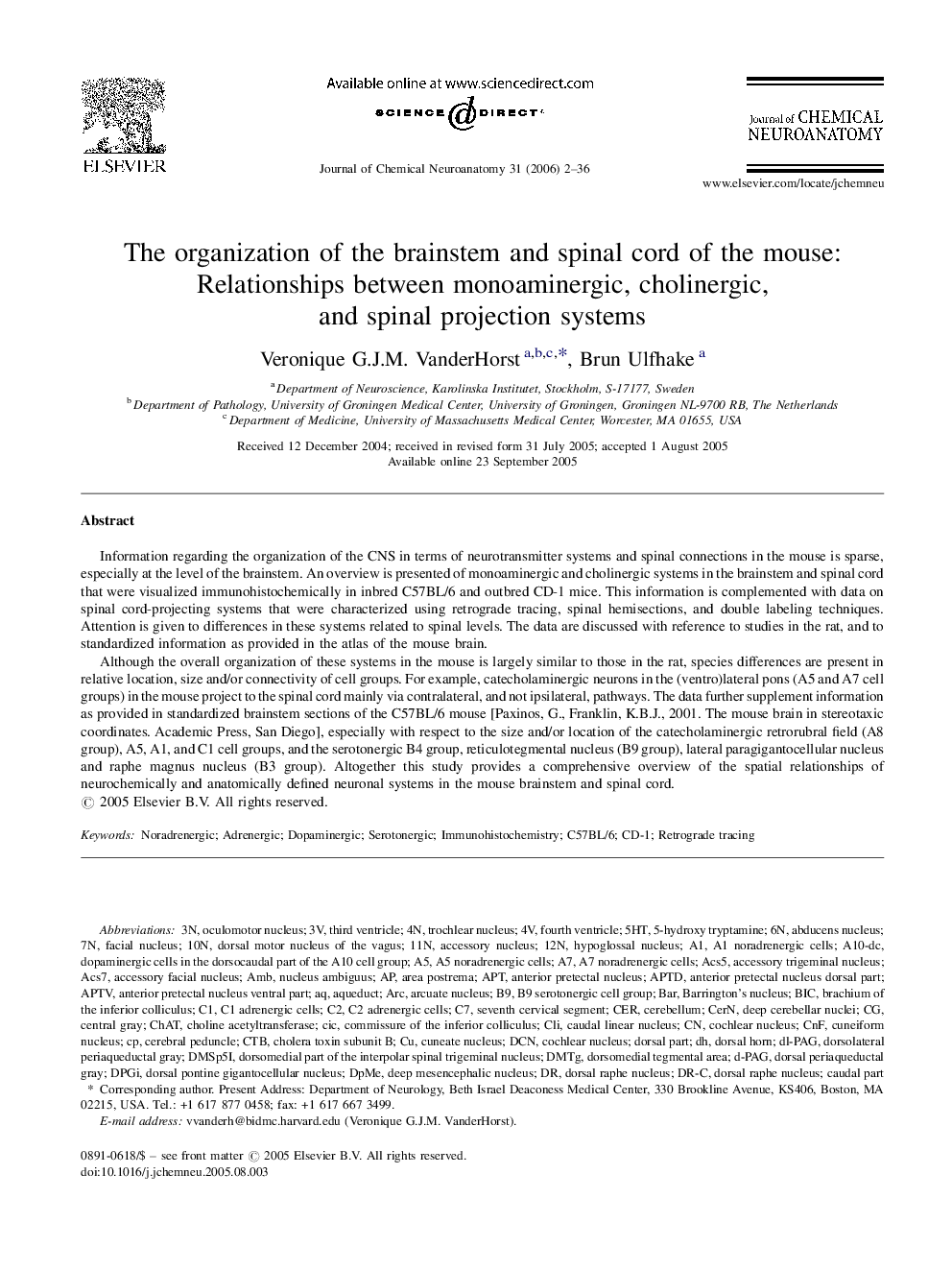| Article ID | Journal | Published Year | Pages | File Type |
|---|---|---|---|---|
| 1989304 | Journal of Chemical Neuroanatomy | 2006 | 35 Pages |
Abstract
Although the overall organization of these systems in the mouse is largely similar to those in the rat, species differences are present in relative location, size and/or connectivity of cell groups. For example, catecholaminergic neurons in the (ventro)lateral pons (A5 and A7 cell groups) in the mouse project to the spinal cord mainly via contralateral, and not ipsilateral, pathways. The data further supplement information as provided in standardized brainstem sections of the C57BL/6 mouse [Paxinos, G., Franklin, K.B.J., 2001. The mouse brain in stereotaxic coordinates. Academic Press, San Diego], especially with respect to the size and/or location of the catecholaminergic retrorubral field (A8 group), A5, A1, and C1 cell groups, and the serotonergic B4 group, reticulotegmental nucleus (B9 group), lateral paragigantocellular nucleus and raphe magnus nucleus (B3 group). Altogether this study provides a comprehensive overview of the spatial relationships of neurochemically and anatomically defined neuronal systems in the mouse brainstem and spinal cord.
Keywords
BICAPT5HT12nAMB10N5-hydroxy tryptamineaqueductBARbrachium of the inferior colliculusthird ventriclefourth ventricleabducens nucleusarea postremaArchypoglossal nucleusoculomotor nucleusnucleus ambiguusBarrington's nucleustrochlear nucleusarcuate nucleusdorsal motor nucleus of the vagusanterior pretectal nucleusfacial nucleus
Related Topics
Life Sciences
Biochemistry, Genetics and Molecular Biology
Biochemistry
Authors
Veronique G.J.M. VanderHorst, Brun Ulfhake,
